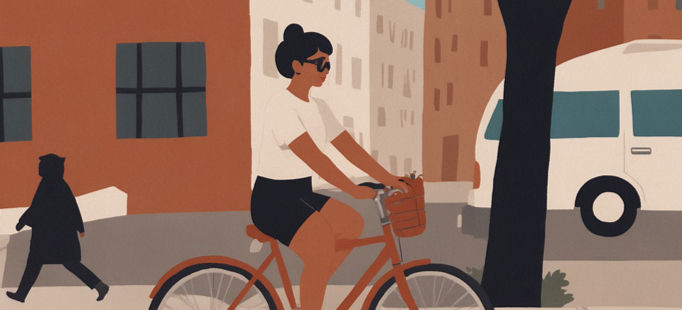Will We Ever Live in a 15-Minute City?
- Paul Francis

- Aug 19
- 4 min read
The phrase “15-minute city” has been buzzing around councils, planning departments, and even protest placards in recent years. At its heart, the concept is simple. Every resident should be able to access the essentials of daily life within a 15-minute walk or cycle from their front door. Shops, schools, healthcare, parks, and workplaces would all be close at hand, reducing the need for long commutes and helping to cut down on car dependency.

Supporters say it is about creating healthier, greener neighbourhoods. Critics call it unrealistic or even restrictive. But with several UK cities exploring the model, the question is becoming less about “if” and more about “how.”
How the 15-Minute City Works
The idea was popularised by Professor Carlos Moreno in Paris, where city leaders have restructured neighbourhoods to bring amenities closer to residents. It involves:
Mixed-use planning: Combining homes, workplaces, shops, and leisure in the same area.
Green corridors: Designing cities for walking and cycling as much as cars.
Decentralisation: Moving away from the idea of one city centre and instead supporting multiple local hubs.
Resilience: Ensuring neighbourhoods can function independently, from access to food to community spaces.
The aim is not to stop people from leaving their neighbourhoods but to give them the option of living more locally if they wish.
UK Cities Taking the Leap
Several councils in the UK are experimenting with 15-minute city principles, though each is approaching it differently.
Oxford
Oxford City Council became one of the first to announce trials, sparking heated debate. Their plan involves restricting car access between certain zones at peak times, combined with investment in cycling and bus routes. The idea is to encourage more local trips rather than forcing residents across town for basic needs. Critics argued it risked “trapping” people, though the council insists the model is about freedom of choice.
Bristol
Bristol has embedded 15-minute city ideas into its long-term planning strategy. Rather than creating new barriers, the city is promoting dense, walkable neighbourhoods with shops, schools, and clinics woven into residential developments. Easton and Southville are often cited as examples where people already live in near-15-minute conditions, with strong community hubs and active high streets.
Edinburgh
Edinburgh has launched what it calls a “20-minute neighbourhood” plan. The principle is the same but adapted to the city’s geography. The council aims to ensure residents can reach shops, services, green spaces, and public transport within a short walk. Pilot areas include Leith, where investment in local shopping streets and public spaces has already started.
Birmingham
Birmingham is looking at how its outer estates can be reconnected. While the city centre is thriving, many residential areas were built around car use. The council has identified neighbourhoods where small-scale facilities like health clinics and shops could be reintroduced to cut long car journeys.
London
Parts of London already function as 15-minute neighbourhoods. Areas like Hackney and Islington have thriving local high streets, schools, and parks within walking distance. However, the Greater London Authority is encouraging boroughs to develop policies that spread this model more evenly, especially in outer London where car dependency is still high.

A Look Back at the Tower Block Dream
For some, the 15-minute city sounds familiar. In the 1950s and 1960s, post-war Britain embraced modernist architecture and the idea of self-contained estates. Tower blocks such as Sheffield’s Park Hill or London’s Barbican were built with shops, schools, and even pubs included. The dream was to give working-class families modern homes with everything on their doorstep.

It did not always work out. Poor maintenance, design flaws, and rising crime left many estates in decline by the 1970s and 1980s. The promise of close-knit communities gave way to isolation and poverty in some areas. For older generations, the memory of these failed experiments lingers, and there are fears that the 15-minute city could repeat some of the same mistakes.
Learning from the Past
The key difference, say modern planners, is that today’s approach is community-led rather than imposed from above. Councils are holding workshops and consultations to shape neighbourhoods alongside residents. Instead of high-rise towers, most designs focus on mixed-use low and mid-rise housing, walkable high streets, and green spaces.
There is also a greater emphasis on flexibility. The 15-minute city does not seek to lock people into their area but to give them choices. If you want to walk to the shops, you can. If you want to drive across town, you still can. The failure of the tower blocks has made modern planners more cautious about assuming they know best.
The Debate and the Future
Despite these reassurances, the concept has become politically charged. Some campaigners fear it will lead to restrictions on personal freedom. Others worry it may prioritise wealthier areas, leaving deprived communities behind once again.
What is clear is that UK cities face enormous challenges. Rising populations, climate targets, and stretched infrastructure mean that the current reliance on cars and long commutes cannot last forever. Whether labelled as 15-minute cities or simply better neighbourhood planning, councils are under pressure to make urban life more sustainable and liveable.
The ghosts of the tower block era will always haunt such debates. Yet for many communities, the dream of being able to shop, work, and socialise close to home remains as appealing as ever. The question is whether Britain can learn from its mistakes and finally turn that dream into reality.










